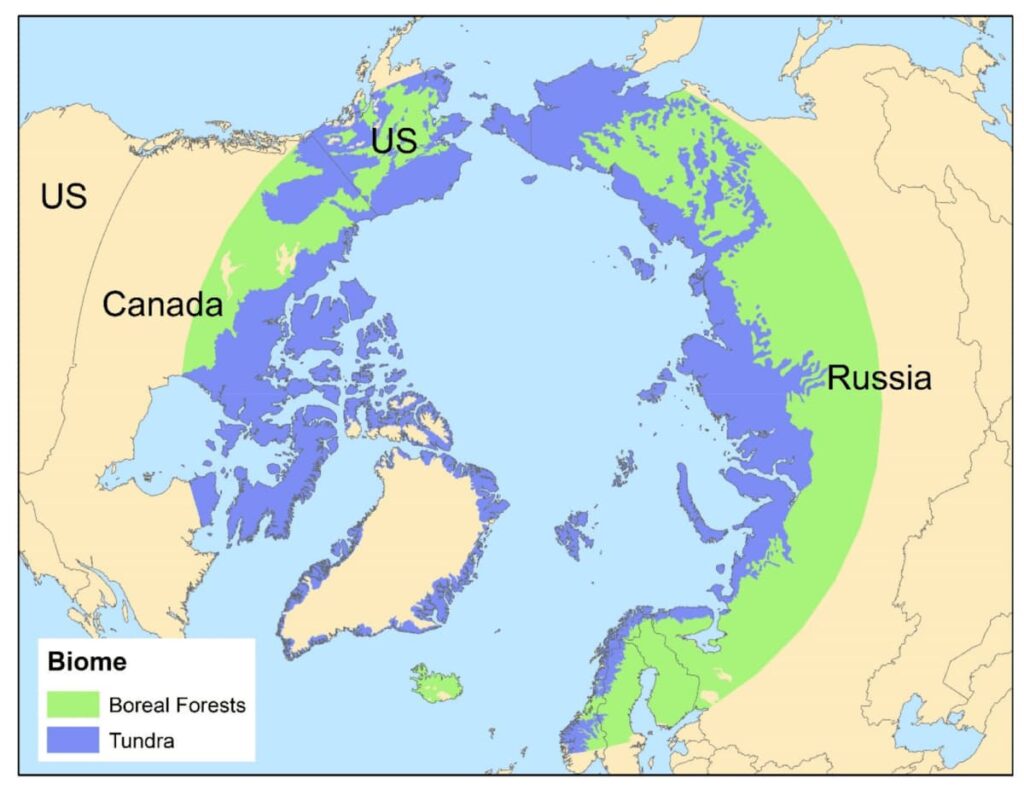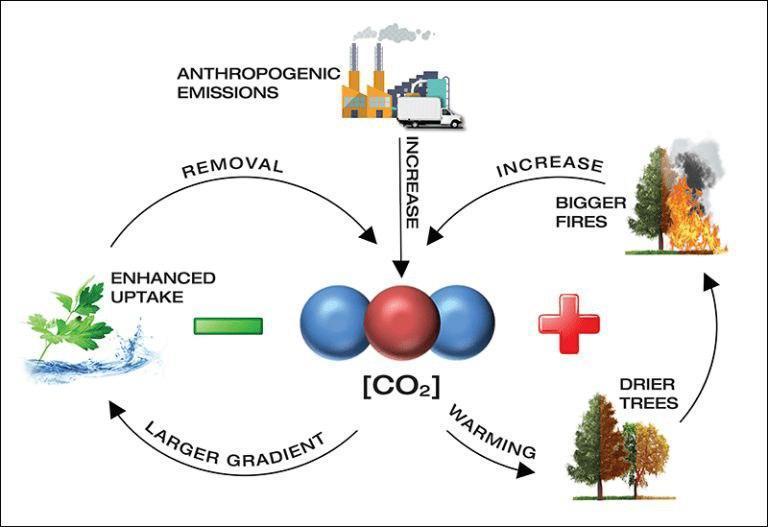Context: The 2024 Arctic Report Card issued by the US National Oceanic and Atmospheric Administration (NOAA) stated that frequent wildfires are turning the Arctic Boreal Zone from a carbon sink to a carbon source.
Arctic Boreal Zone

The Arctic biome is a vast transitional zone, also known as boreal forests.
It lies between the Arctic tundra and the temperate forests of the Northern Hemisphere.
It represents one-third of the Earth’s forested area, making it the largest terrestrial biome.
Geographically, it spans across:
Canada
Alaska (USA)
Russia
Mongolia
Scandinavian countries (Norway, Finland, Sweden)
It plays a crucial role as a significant global carbon sink.
The biome is dominated by coniferous forests, but also includes:
Tundra
Wetlands
Permafrost zones

Why is the Arctic Boreal Zone (ABZ) releasing more carbon dioxide?
🔥 1. Frequent and Intense Wildfires
According to a study published in Nature Climate Change, over 30% of the Arctic Boreal Zone has shifted from a carbon sink to a carbon source.
Wildfires have become more frequent and intense, burning through natural carbon reservoirs such as:
Forests
Peatlands
These ecosystems, once storing carbon, now release large amounts of CO₂ into the atmosphere.
❄️ 2. Thawing of Tundra Permafrost
Permafrost refers to permanently frozen ground beneath the tundra, which stores 2.5 times more carbon than what’s currently in the atmosphere.
Due to rising Arctic temperatures, permafrost is thawing.
As it thaws, it releases:
Carbon dioxide (CO₂)
Methane (CH₄) – a more potent greenhouse gas
This thawing reduces the carbon storage capacity of the ABZ and adds to global greenhouse gas emissions.
🔥 Increasing Intensity and Frequency of Wildfires
🌍 A Global Trend
Multiple countries — including the U.S., Japan, and India — are experiencing a sharp rise in wildfires, dust storms, and extreme weather events.
📊 Alarming Data from 2025
According to the Copernicus Air Monitoring Service (CAMS) of the European Union:
Wildfires in January 2025 alone released approximately 800,000 tonnes of carbon.
This is nearly 4 times higher than emissions from wildfires recorded a decade ago.
🇮🇳 India’s Wildfire Emissions
India’s wildfires are estimated to emit 69 million tonnes of CO₂ annually.
This adds significantly to the region’s greenhouse gas burden.
☀️ Changing Heatwave Patterns
Heatwaves are arriving earlier, lasting longer, and moving more slowly.
These shifting patterns create ideal conditions for wildfires, making ecosystems more vulnerable.
The result: long-term implications for climate change, including feedback loops that accelerate global warming.
